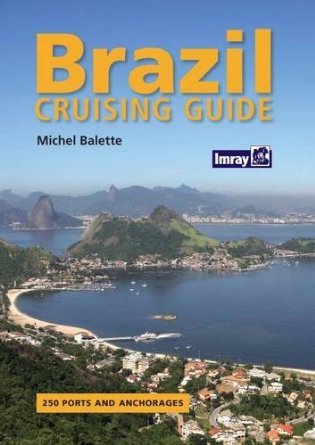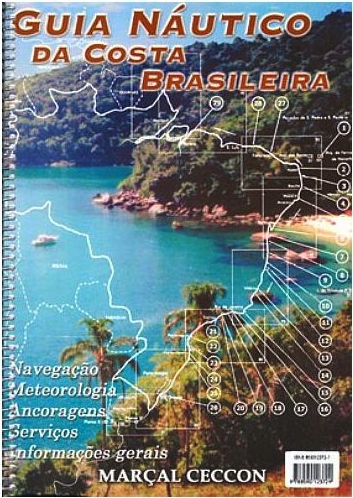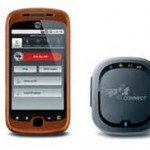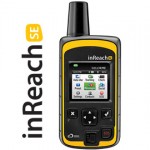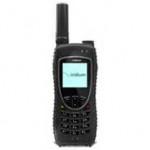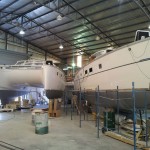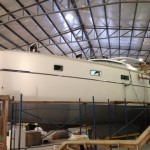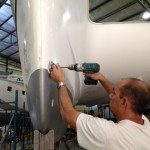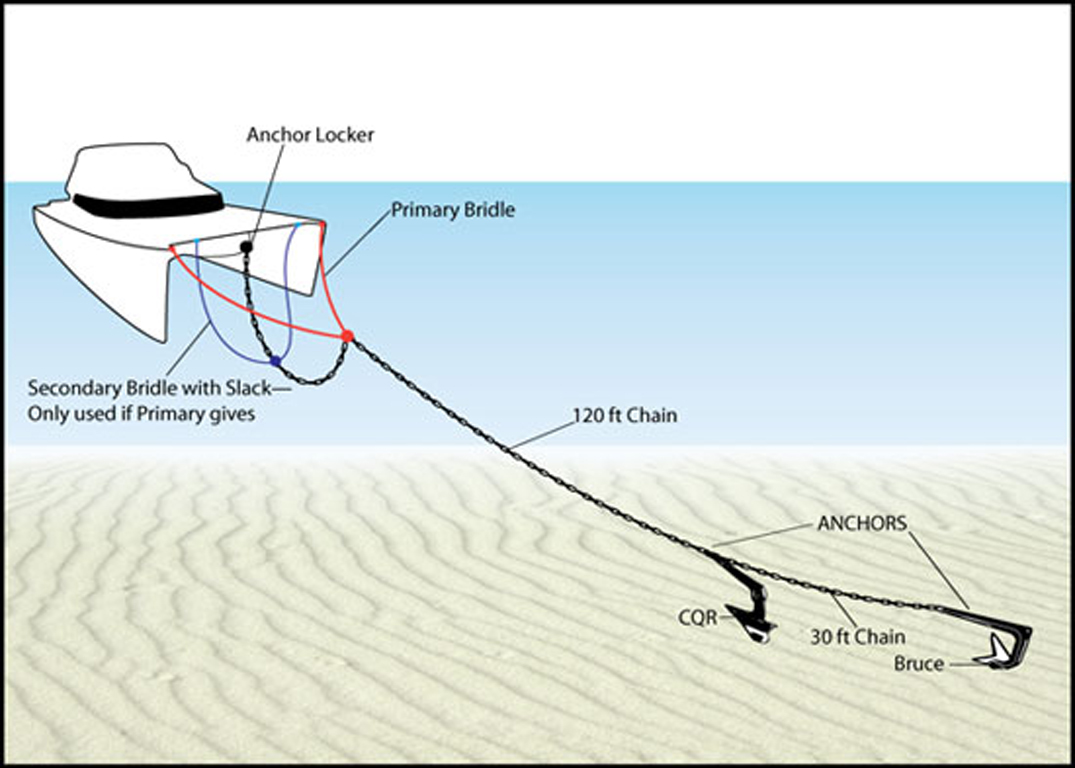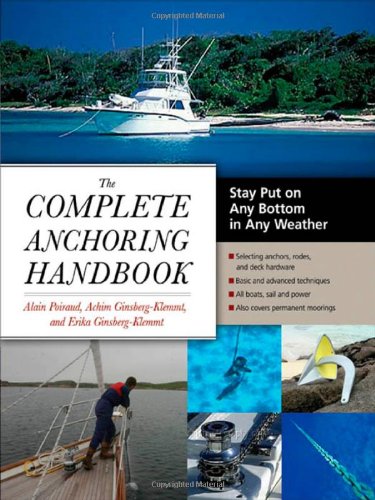Plans of sailing over the horizon without a care in the world have been curtailed by paperwork that seems to want to follow me to sea. Here is a post on what I have learned during the process of setting up s/v Two Fish. Please do not take this advice as a given. It is more like clues from the clueless. I did not study Argentine or Brazilian import duties in school, and given my sloppy dedication to my studies I doubt a class in this topic would have increased my knowledge.
This post will be more interesting to Antares owners, since they face the bulk of the South American documentation issues. For others, this post will be as useful as a snow shovel is for a resident of Key West.
Step #1 – LLC or No-LLC
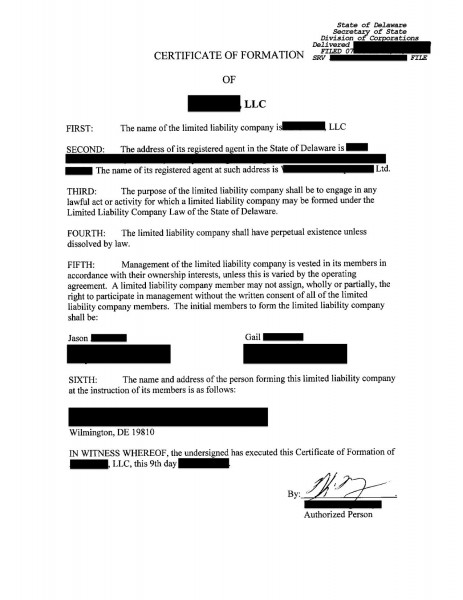
Evidence of new LLC
First, you must decide if you want to own your boat outright or manage it via a Limited Liability Company (LLC) that owns the boat.
Pros of LLC: Like it says on the tin, an LLC “limits your liability”. If a court battle erupts, this ownership structure allows you to separate your other assets from the operation of the boat. Another pro for international celebrities is the ability to have your ownership be private. That is why Two Fish and the Russian oligarchs chose the LLC format.
Cons of LLC: You will have to create sufficient paperwork to support that the LLC has given you rights to the boat. Imagine showing up in port with your US Coast Guard documents that say the boat is owned by some furtive sounding LLC. “Mr Port Officer, The Dark Shadow LLC is owned by me.” What do I have to prove it? Is a note from my mommy enough? So one must visit notaries, Consulates, and the State of Delaware to document ownership.
Step #2 – Create a Delaware LLC
We chose to create an LLC in the State of Delaware. We hired Jan Painter of All Yacht Registries in Omaha to help with the process (Phone: 402-505-8014 www.allyachtregistries.com). Jan was very helpful and efficient, despite my preconceptions that Nebraska is not a state brimming with yachting traditions. This first step puts you $450 closer to the poor house, but your LLC now exists in the State of Delaware. Do not pack up the kids for a road trip to look at the corporate headquarters, but it will be searchable online, legal with the state clerks and will have a legal address in a cookie cutter office park that also has a chiropractor.
Step #3 – Get a Builder’s Certificate
Before you can start any paperwork, you need to own a boat. Once you are near completion, the factory will fill out a “Builder’s Certification and First Transfer of Title” that will be the basis for your next steps. The form describes the boat’s length, displacement, engines and such. It also lists the boat’s hull number. Antares was very efficient in producing this document.
With a valid LLC (step #2) and a completed builder’s certificate (step #3) you can return to ALL YACHT REGISTRIES to apply to be a USCG documented vessel.
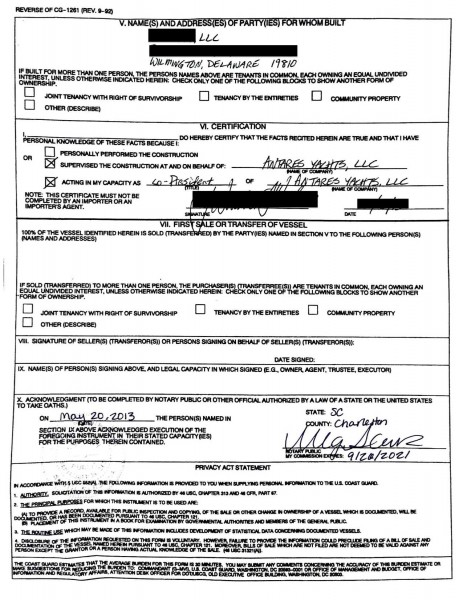
Builder Certificate page 1
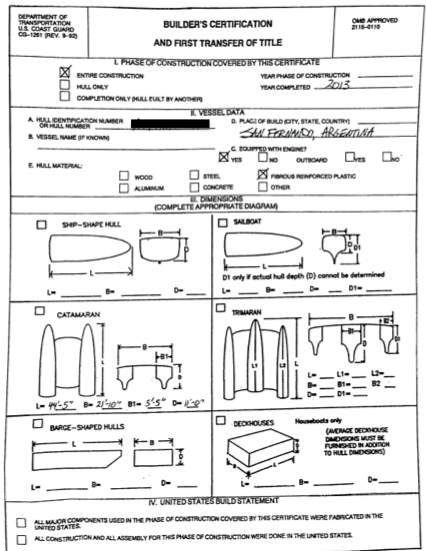
Builder Certificate page 2
Step #4 – US COAST GUARD Documented vessel
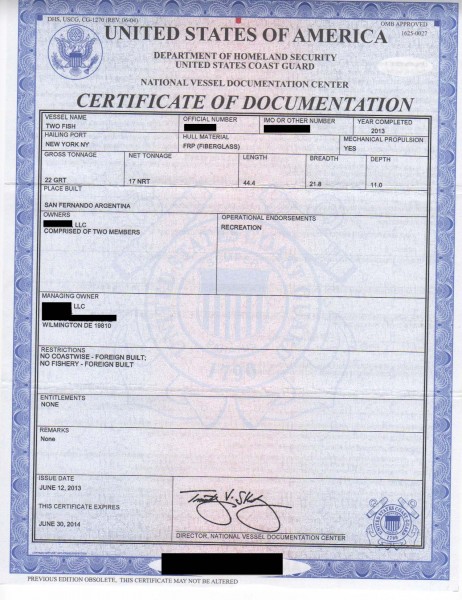
USCG Documentation
I budgeted about 1 month of time to reach the end of step 4, even with express service. All Yacht Services will now submit your LLC paperwork, your Builders Certificate and a completed application to the US Coast Guard. The “Application for initial, exchange, or replacement of certificate of documentation; redocumentation” is about as friendly an application as the title would indicate. But it was a breeze to fill out since All Yacht Services was in charge. After a few anxious weeks, one is rewarded with a USCG document in classic terse language, stating that your LLC owns your boat, at least in the eyes of the US Coast Guard. The next few steps will allow other authorities such as the Argentines and Brazilians to join in this view.
This next paragraph is way over my head but here is my explanation of Documentation vs Registration. Recreational boat owners in the U.S. are required to register their vessels with their respective state governments unless they have documented their boats with the federal government. Documenting vessels started as a way for the federal government to manage commercial shipping and its resultant taxes on merchant cargoes. Today the U.S. Coast Guard is in charge of documentation, and there are multiple types of vessels that can be documented, including recreational vessels. Any vessel of 5 net tons or more can be documented. Documented vessels are given unique official numbers similar to state registration numbers. However, documented vessels do not display their official numbers on the outside of the hull; they are identified by the name and hailing port. The application for documentation must include a name for the vessel, which may not exceed 33 characters. The name may not be identical, actually or phonetically, to any word or words used to solicit assistance at sea; may not contain or be phonetically identical to obscene, indecent, or profane language, or to racial or ethnic epithets. Once established, a vessel’s name may not be changed without application, fees, and the consent of the Director, National Vessel Documentation Center. There is no rule against duplication of names for documented vessels, so hailing ports are helpful in identifying vessels. The official number must be posted in a visible location inside the boat.
So why would you want to document your boat rather than simply register it with your state?
- Documentation eliminates the need for state registration, until you stay in a state for a long period of time. We may end up registering in the State of Florida, but will cross that bridge when we come to it.
- If you travel to foreign waters, the Certificate of Documentation facilitates clearance with foreign governments and provides certain protections of the U.S. flag. This is important to me.
- It is much easier to track stolen vessels across state lines with the federally documented “chain of ownership”. Our boat is larger than an iPhone, so this is not too important.
The USCG documentation needs to be renewed annually so mark it on your calendar as your mail service might be slow.
Step #5 – FCC and a Call Sign
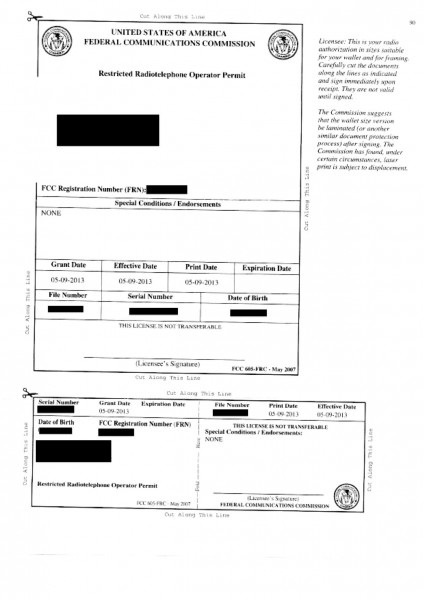
Radio Operator
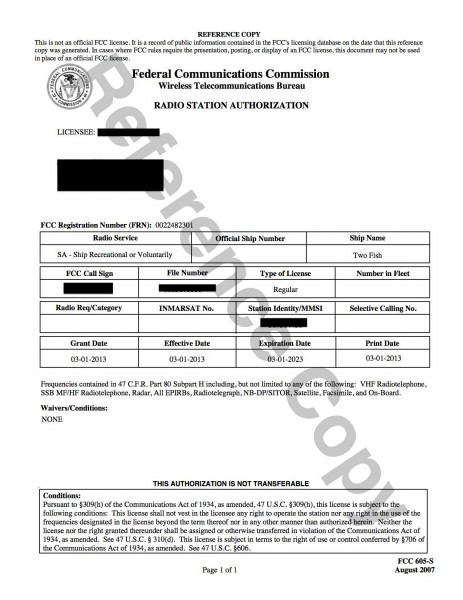
MMSI + Call Sign
I am a bit of a rule follower and the rules state that to use your SSB, you need to pay two fees to the FCC. A quick trip to this web site will get you started: https://wireless2.fcc.gov/UlsEntry/licManager/login.jsp One permit you need is the restricted radio telephone operator permit. I am not sure what the consequences would be for not having this permit. Somewhere on the FCC site they threaten to make you listen to elevator music for 1,000 hours on a poorly tuned AM radio. So to avoid this, we have spent the money for this permit. On the back of the license I was informed of its limitations pursuant to the Communications Act of 1934. Disappointingly, my new permit does not allow me to start an 80’s hits radio station. I rather fancied the idea of becoming a disc jockey.
The second license grants you an important call sign for the Single Side Band radio. It is also granted via the FCC.gov website. This is handy for radio communications and required if you plan on using sailmail.com. Sail Mail is a program that uses the SSB as a slow modem to check for text-only emails while mid-ocean. 200 bucks a year grants you an annual subscription to Sail Mail. It includes software, access to weather data and no usage charges, as long as you use it prudently. Two Fish will use this for getting free weather updates mid-ocean. As a random fact, the engineer who created the technology to use an SSB as a modem also designed the yellow first down line you see on TV when watching American football. At the end of the process, you should have two licenses from the FCC (Ship Radio and Call Sign). The site is a bit confusing but you will find your way through after being relieved of some hard-earned ducats.
This process also produces an MMSI number. This number is used in Digital Selective Calling (DSC) and is need for modern VHF, SSB and AIS. The AIS uses the MMSI number to broadcast your intentions to ships within VHF range. The MMSI number can also be used to hail a specific yacht rather than summon it via the public channel 16. And finally, DSC can be used for automated distress calls on the VHF or SSB. If you fail after placing a satellite phone call, EPIRB, and a traditional VHF, call you can try this system.
Step #6 – EPIRB
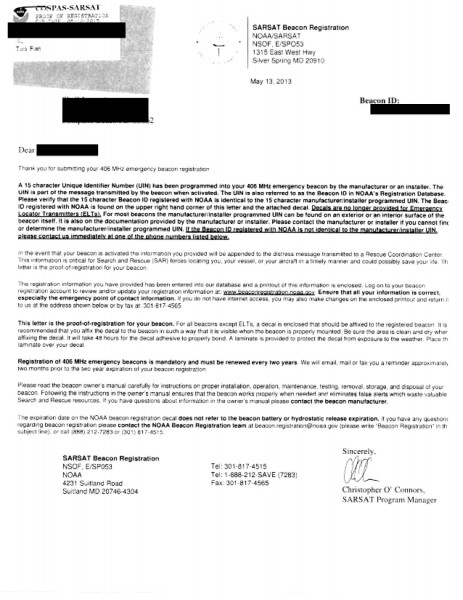
NOAA EPIRB Registration
Darwin award winners are selected for doing incredibly stupid stuff that sometimes eliminates them from sustaining their lineage. Previous winners have tried to ascend to 2,000 feet using a lawn chair and helium balloons. After take-off, it was discovered that they had no landing strategy.
Not as dramatic an award winner, is buying an EPIRB and not registering the life saving device. Registration is free and allows the Coast Guard to know who you are when you press the panic button. They can call loved ones, who can direct the Coast Guard with additional data such as that the Two Fish crew are skiing in Colorado so it must be a false alarm. This does incentivise the crew to stay on good terms with their emergency contacts.
The packaging with your EPIRB will have many places strongly encouraging you to register your EPIRB and avoid any chances of collecting a posthumous Darwin award. Do spend some thought telling you loved ones how to respond to a call from the USCG. The USCG will have the precise location of the EPIRB but want help to make sure it is not a false alarm. We will maintain a float plan on the site and this, along with the Spot tracker, makes it easy for our helpers to assist in our search and rescue. However, I think there are better odds we will use the EPIRB when lost in a carnival parade in Brazil or a bar in the BVI, as true emergencies are rare.
Step #7 – Power of Attorney for Argentina
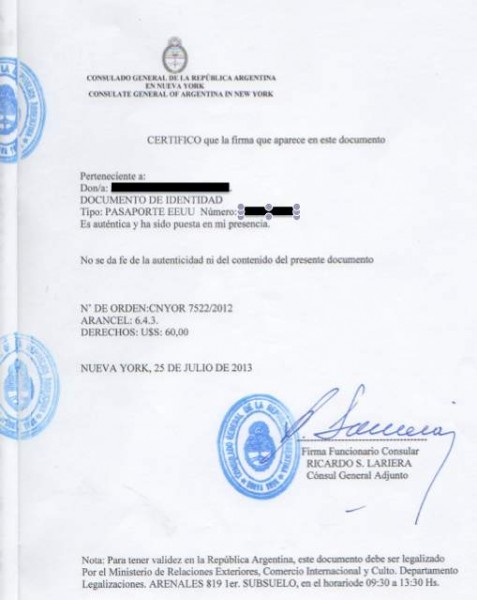
Power of A Page 2
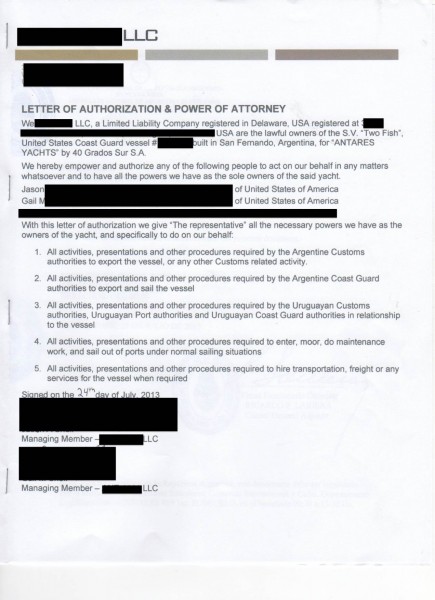
Power of Attorney
If the previous steps did not seem odd, arduous, and annoying, the next steps will certainly make you scratch your head. Argentina carefully controls imports. Boat builders that export their product get an exemption on import taxes for the parts they are including into the exported yacht. A gizmo imported from the US might face a 50% tax, but if it is proven that the gizmo is going to be part of Two Fish then the tax is not charged. This forces the Argentinian customs officers to keep a tight leash on the entire process. The factory does a great job of coaching buyers on the requirements.
To get your boat out of Argentina you will need a Power of Attorney, if you have decided upon an LLC structure. The POA can be written by the members and then signed in the presence of the Argentine Consulate. You can imagine that it is not a daily procedure for the consulate, so when you ask for their help, work on your best manners. It really helped to have a sample of a previous boat’s POA which gave the consulate confidence that it was an OK process. I visited during the morning (9-12 for all new requests) at 5th and 56th Street. I was able to get this stamp in the NY consulate but they were considering sending me to Washington D.C. The basic text of the POA states that certain people are empowered by the LLC to use the boat in various ways. The various ways do not include a dance party platform, but more pedestrian activities like sailing the boat, fixing systems and working with Customs. The cost was $60 payable only via a US postal money order. I had to leave my passport and the POA with them overnight. The document came back with a second page attached saying in Spanish that they had checked my passport and seen me sign the document. Fingers crossed.
Step # 8 – Delaware Confirmation of the LLC
So you have told the USCG that your boat is owned by some made-up name LLC. Sounds to me like you have given your boat away to an entity in the ether. To prevent donating your pride and joy to the tax collector, one must write an operating agreement. I am not a member of a bar, but I have been to a few bars, so here is the operating agreement we are using. It tries to achieve two goals. Firstly, the legal stuff which you should seek advice from counsel for at $500 per hour. Secondly, the agreement is formatted such that the Brazilian Consulate will find it matches their specific needs. Calm down, I will have more detail on Brazil later. Click on the link to open a PDF of a template.
Operating Agreement Template
Step #9 – Time to visit the Notary in Dover, Delaware
We bought the boat so we could travel to far away places. Little did we know that our first trip would be by car to Delaware to have the agreement notarized. The reason we are driving to Delaware is that the State will only authorize Delaware notaries. The State of Delaware can do its part by mail, but not the notary (as far as I could figure out). Also we are in a small rush, so the drive is our best option. Most Delaware banks and UPS’s have notaries. (PNC Bank at 3 the Plaza) is closest to the Delaware Division of Corporations, your next stop. Or, the closest UPS is (http://www.theupsstorelocal.com/4435) — The UPS Store 73 Greentree Drive, Dover, DE 19904 (302) 346-1010 — Monday – Friday 7:30 am – 6:00 pm.
Notary Check List:
1) Original Document
2) Notary is approved by the State. (It may be that the notary can only be from the State of Delaware)
3) Notary’s raised seal or embossing seal (Name, commission, expiration of commission, state of commission)
4) Documents with more than one page must be stamped on each page by the notary and the pages numbered (ie 1 of 4).
5) The notary must write that the signatures were written in his or her presence. Notary must identify the author of the signature by writing the signator’s full name. It must be clear which signature is being authenticated. Good to reference the passport being checked for face and signature. I hope the template helps achieve these goals.
6) Notary must state location, date and signer’s full name.
7) You will need to do this TWICE. One version for Brazil legalization and one for global apostillization (see Step 11, point 3)
Step #10 – Answer this question honestly
Do you crave maple syrup at odd times? Does Saturday night just feel right if ice hockey is on your TV? Then you are Canadian and some of this post does not apply.
Step #11 – Cross the street from the Notary and Visit the Delaware Division of Corporations
You probably want to confirm your LLC exists before the big drive. Use this link https://delecorp.delaware.gov/tin/GINameSearch.jsp.
401 Federal Street Suite 4 is the office location. Or better yet, surf their website and you will learn more. http://corp.delaware.gov
Here is my checklist from this visit:
1) Certification of commision of the Secretary of State of the acts of incorporation. In short an agent of the Secretary of State will say your LLC exists. BOTH COPIES
If you were concerned that John Kerry might be the Secretary of State signing your boat documents then relax. He will not be involved. Which is good because he has had 3 boating events that have slowed his career (1) registering his boat for tax-advantaged reasons (2) boating during the Egyptian collapse (3) Swift boat accusations during his presidential campaign.
2) The state of Delaware will also need to certify the public notary you employed to watch you sign your operating agreement. Make sure they include the notary’s commission, jurisdiction and signature. BOTH COPIES
3) In 1961 most nations in the world signed an agreement about how documents would be signed. Sort of an international notary agreement. This is called Apostille. The plan is to take take your first notarized operating agreement to the kind folks of the Delaware government to stamp, sign, or whatever motions are required to satisfy this international treaty. This document will work great from Albania to Vanuatu but not in Brazil. ONE COPY
The Delaware Division of Corporations can apostille or authenticate documents notarized by a Delaware Notary, certified vital records from the State of Delaware, and official State documents (e.g., background checks).
4) The second copy will need the Brazilian Consulate’s blessing, after the state of Delaware has done points 1 and 2.
I spoke with the office, and the process, if you pay a bit extra, should only take a few hours. Enough time for a relaxed lunch in Dover. Anyone have friends in Dover? After the documents are picked up it is a 1.5 hour drive to DC.
Step #12 Consulate of Brazil, Washington D.C.
“The certifcation by a Secretary of State where a business is incorporated suffices for the Consulate to legalize the acts of incorporation.” Quote from Consulate website and the reason we have come to visit.
You may boast that you live in a big town and have a consulate in your city. I surely did, but it will not help. Brazilian consulates are regional, so if your LLC is in Delaware then only the DC Consulate can Legalize your documents. Sorry, but while in DC, you can see your tax dollars at work.
Consulate General of Brazil in DC is located on 1030 15th Street NW. The office is open from 9 to 1pm.
For this step you will need
1) Your notarized and Delawarized operating agreement.
2) Passport
3) 20$ US postal money order
4) A self-addressed, paid, express mail envelope
The Brazilians are known for being particular so spend a bit of time looking through these two links. Do not visit the sites for the Consulates in different cities as the processes may not match.
How to Legalize documents for Brazil
Procedures for Legalizing
Top 20 Mistakes
You have finished the voyage of documentation. The Brazilians will Express Mail your legalized documents in a few days.
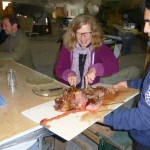
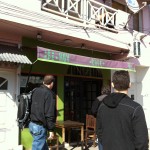



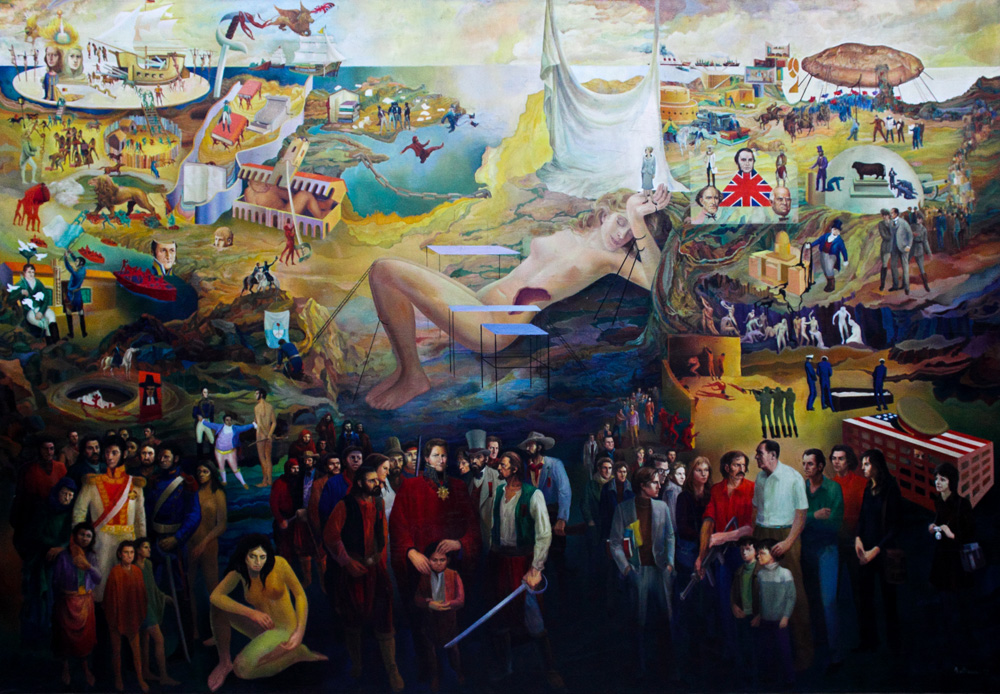


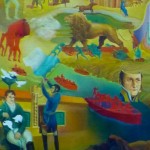
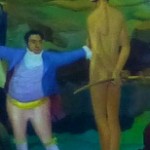
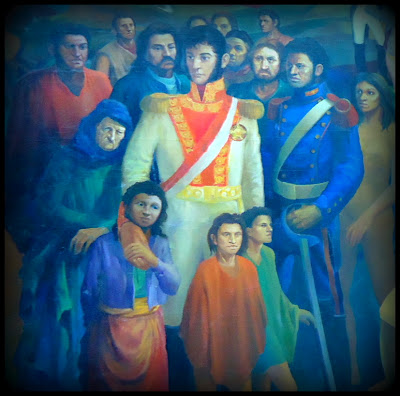
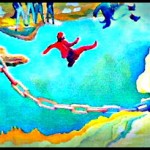

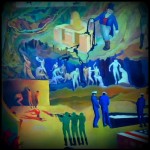


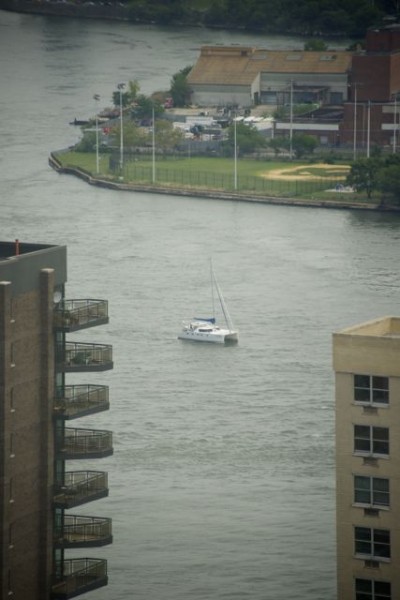
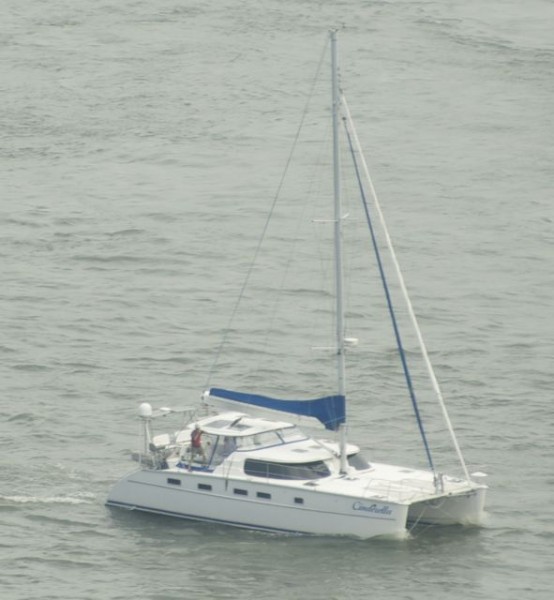














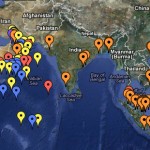

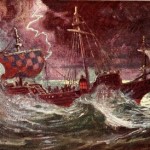 scene of Shakespeare’s play. I imagine if he had had our technology then the outcome for the Duke of Milan would have been much different. We have the ability to download long term weather forecasts, hire professional weather routers, use radar to track storm cells, and update weather reports every 4 hours via satellite. With that technology, and an ability to relax and wait for the next weather window we should rarely see wind speeds over 40 knots. I remember one decade-long cruiser explaining that he almost never encoutered those wind speeds because of prudent planning. But what if the big stuff comes? The boat is built to take a ton of punishment and we have storm coping strategies. For example, we can operate everything from the cockpit, making it much safer in high winds. Also, we have a drogue to stablize the boat in high seas. In certain conditions we will “park” the boat in the ocean when it gets ugly via a variety of sailing techniques. Back-winding the jib (trimming it from the wrong side) stablilzes the boat in high wind speeds. Running bare-poled (no sails) and a variety of other storm coping techniques are used by mariners to make a bad situation much less scary.
scene of Shakespeare’s play. I imagine if he had had our technology then the outcome for the Duke of Milan would have been much different. We have the ability to download long term weather forecasts, hire professional weather routers, use radar to track storm cells, and update weather reports every 4 hours via satellite. With that technology, and an ability to relax and wait for the next weather window we should rarely see wind speeds over 40 knots. I remember one decade-long cruiser explaining that he almost never encoutered those wind speeds because of prudent planning. But what if the big stuff comes? The boat is built to take a ton of punishment and we have storm coping strategies. For example, we can operate everything from the cockpit, making it much safer in high winds. Also, we have a drogue to stablize the boat in high seas. In certain conditions we will “park” the boat in the ocean when it gets ugly via a variety of sailing techniques. Back-winding the jib (trimming it from the wrong side) stablilzes the boat in high wind speeds. Running bare-poled (no sails) and a variety of other storm coping techniques are used by mariners to make a bad situation much less scary.
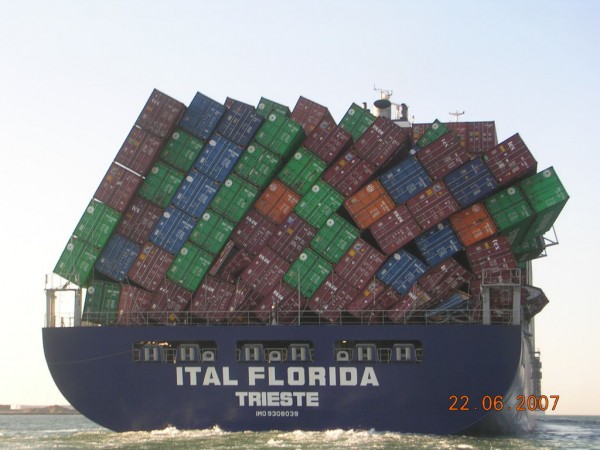
 Gail’s Fears
Gail’s Fears 1) My biggest fear is being bored. From Manhattan to a remote Brazilian anchorage, will I adjust to the lack of city stimuli? No take-out food, no long walks exploring, no people-watching and no engaging co-workers. I will both miss and enjoy being taken out of the action.
1) My biggest fear is being bored. From Manhattan to a remote Brazilian anchorage, will I adjust to the lack of city stimuli? No take-out food, no long walks exploring, no people-watching and no engaging co-workers. I will both miss and enjoy being taken out of the action.